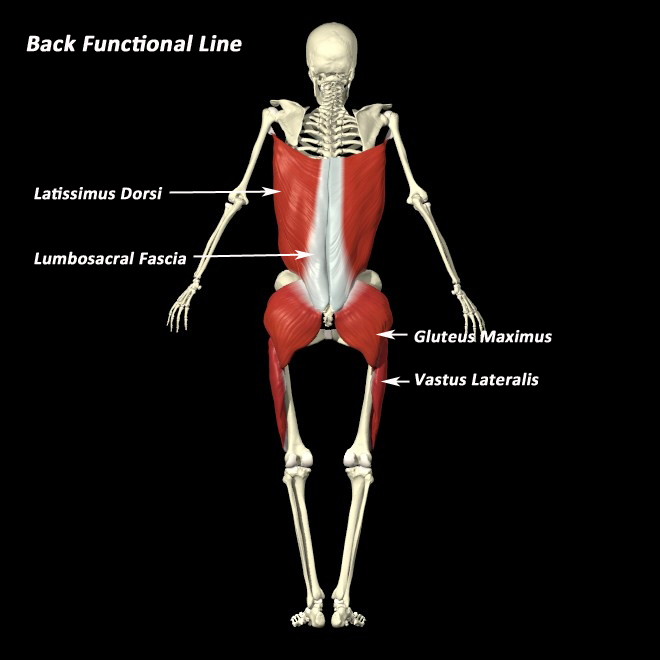The Most Misunderstood Core Muscle
2019-07-29
Say the word “core” to a fitness professional and half the people will roll their eyes and the other half of people will think you are talking just about the “abs”. In order to really understand the value of real core training we have to understand the core is just one singular or group of muscles we are talking about. We are actually looking at how 35 muscles work synergistically to help us make complex movement appear simple. With that said, there is ONE core muscle that tends to get overlooked.
Who is it? Is it your transverse abdominis? How about that diaphragm? It MUST be the glutes right?! While none of those would be terrible options, the core muscle that I continue to see people misunderstand the value of and is SO important to your core training it is the lats!

Wait! The muscle that gives us that nice v-shape in the upper body? The muscle that we train during pull-ups, pull downs, rows, etc? THAT lat muscle? Well, yes, but you see that is why I say it is the MOST misunderstood and underutilized core muscle.
I know, I know, in college I learned in all the same textbooks that the lats internally rotate the shoulder. They do! However, that is only about 20% of what they do! If we look at the lats, we quickly realize they are MASSIVE muscles and the ONLY connection we have from the upper body to the pelvis. Hmmm, that can’t be by accident can it?
Obviously not! Especially as we continue to look at the lats and realize that they aren’t just muscles that run up and down, but diagonally. Why does that matter? As I have written many times, most of the complex and important muscles have to perform multiple jobs at once. That means they can NOT be shaped just up and down as well as telling us that they have to resist and produce force at the same time. How important are the lats to being a powerful core muscle?
According to physio-pedia.com:
“Traditional exercise training to stabilise the Sacroiliac Joint focuses on ‘core’ units, often with the aim of isolating muscles in order to strengthen them. As discussed in the section “Stability in the Lumbo-Sacral Region” the demands upon human beings suggest that strengthening techniques should be incorporated into dynamic movements. Thus, in order to train the Posterior Oblique System (POS), the Glute Maximus and Latissimus Dorsi should not be viewed in isolation, rather utilised in synergy with each other to promote efficient gait as described previously. A good example of an exercise that can be used for treating POS dysfunction is the reverse lunge. A therapist should utilise this once a patient can achieve pain-free hip motion and satisfactory static stability.”
https://www.instagram.com/p/B0daEtQnQT_/
Here is a practical way I show people how big of a role that the lats play as a core muscle, but also how they impact the strength of the glutes.
In other words, the lats play an important role in us both having stability and producing motion. However, at the same time, the lats nor the glutes do so in isolation, but collectively. That makes sense we need to train these muscles together as they are designed to function which is why we do exercises like dead bugs and hip bridges differently as Jessica explains.
https://www.instagram.com/p/BzQQporHJ_I/
Sooooo, cool fact, but how do we teach people how to use their lats in training? MOST of our cues will focus on the use of the hands like we focused on the feet yesterday. If we can get people to use their hands and feet, it is amazing HOW much better we make people. What do I mean? Coach Megan Berner breaks down how we use this concept to use the fact the lats are a strong core muscle to help us build smarter squats!
https://www.instagram.com/tv/By5y9d6B0un/
How much of a difference can using the lats be? Well fitness pro Janice Penninton-Strock shared this experience she had in learning these strategies, “Limited movement can be beyond frustrating, especially as we age and feel we have no control over tightness and stiffness. Sometimes it’s as easy as giving your body a small change in input that allows your neuromuscular system to trust the movement.
This summit was life changing. I have better range of motion now than I did 10-15 years ago. Thank you, Josh Henkin for sharing your knowledge!”
This isn’t a one time off thing either. You will see from the video below, JUST by getting people to integrate their lats as core muscle, we can change how people align their pelvis and use their core without using useless cues like “find neutral spine”, “use your core”, “brace your core”, or whatever. Instead, simple cues give us these super powerful results!
https://www.instagram.com/tv/B0RLSZjHyNS/
Jessica shows that these simple cues of “pulling the handles apart”, “no saggy bag” are cues that mom and dad can not only understand, but utilize to engage their lats effectively. What happens? People not only feel a core muscle they never really felt before, but they obtain a plank that allows them to save their back and protect their shoulders. Not a bad deal right?
This week you can not only save 25% on our Ultimate Sandbags/water bags, but when you do you will also get our 12 week DVRT jump start program to help you maximize your training. Just use code “save25” HERE
https://www.instagram.com/tv/B0DsIWBHpq8/
© 2026 Ultimate Sandbag Training. Site by Jennifer Web Design.







